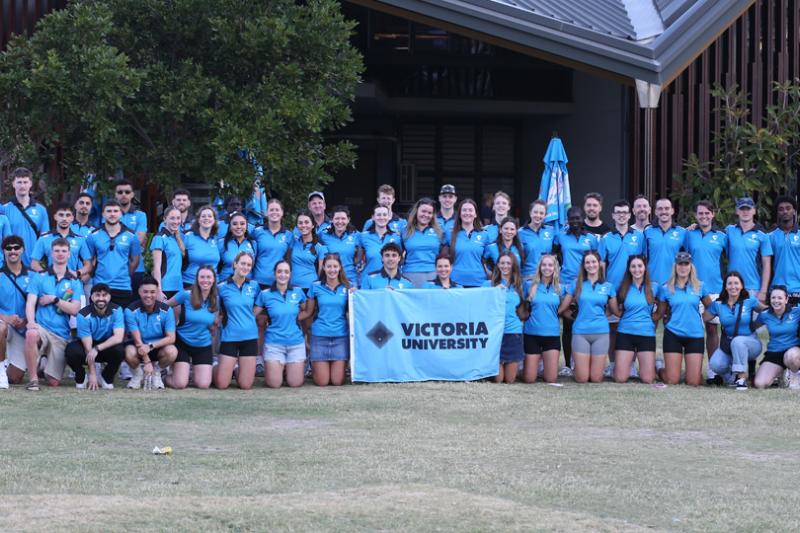2021 is the year Australia’s international student crisis really bites

2021 is shaping up as very difficult for universities, as well as the more than 130,000 people (PDF, 2.4 MB) whose jobs rely on the international education sector.
In October 2019 almost 51,000 new and returning international students arrived in Australia. In October 2020, this figure had fallen by 99.7% — to just 130.
The Mitchell Institute has previously estimated (PDF, 1.54 MB) about 36% of annual international student spending is on property and another 36% is on hospitality and retail. The large drop in international students inside Australia means the many businesses and property owners that rely on international students will continue to suffer.
Australian states had plans to trial the return of some students with quarantine arrangements in place. These included returning 300 international students to South Australia, 350 to the ACT, and setting aside up to 1,000 quarantine places per week in NSW for international students and temporary migrants. Other states hadn’t specified their plans.
But the NSW effort to bring back international students has stalled, while the ACT is still waiting for approval from the Commonwealth and South Australia’s plan has not been finalised. Only the Northern Territory has succeeded in bringing back 63 international students since the borders closed to temporary visa holders in March last year.
But even if all the states had progressed with their plans, there would be nowhere near the amount of international students needed to stem the economic shortfall.
Fewer students coming in than going out
The impact of the coronavirus pandemic on the international education sector differs to other parts of our economy. Employment in industries such as retail and hospitality have recovered slightly from the initial COVID-19 shock.
But the international education sector continues to decline and is yet to reach its lowest point.
While the situation is bleak, there are encouraging signs for renewal.
The concepts of stock (the number of current students) and flow (the number of new students) help understand the nature of the problems facing the international education sector.
Since the start of the coronavirus pandemic, the stock of enrolled international students has become smaller as they finish their courses.
In October 2019, 580,202 international students (PDF, 146 KB) were enrolled in Australian courses. By October 2020, this had reduced by 13% to 502,206.
The stock has shrunk because the pandemic has interrupted the flow of new international students. This means there are fewer new students replacing those finishing their courses.
There is still some flow of new students into courses. For instance, between July and October 2020 about 25,000 new international students started a course (PDF, 237 KB) in Australia. But this is much lower than the 100,000 during the same period in 2019.
And from now on, the stock of enrolled international students is likely to continue to fall much more quickly than the flow of new students.
According to Australian government data (PDF, 146 KB), about 120,000 international students, or 24% of the enrolled cohort, were due to finish their course between October 2020 and January 2021. With borders remaining closed there is unlikely to be enough students to replace them.
Students outside Australia aren’t spending in the economy
Compounding the problem is that many international student visa holders are outside Australia. In the 2019 calendar year, international education contributed more than $40 billion to the Australian economy. At the end of December 2020, 158,014 out of 543,522 visa holders were not in the country. This means they will not be spending in the wider Australian economy.
The number of international student visa holders inside Australia at the end of 2020 (around 385,000) had dropped by almost 195,000 compared to October 2019 (PDF, 1.4 MB).
The trials to bring back international students were mostly addressing the issue of existing students (the stock) stranded overseas. Even if they were successful, they would not have had a substantial impact on restarting the flow of new international students into Australia.
What’s the economic impact?
Universities have been affected greatly by the crisis. In 2019, universities reported A$9.8 billion in revenue from international students. Throughout 2020, losses may have been somewhat contained as international students were still finishing their courses.
However, the continued reduction in the stock of international students means 2021 should be the year the financial impact of the crisis will bite.
More than 40% of the sector’s annual student revenue now comes from international students.
Based on a reduction of 30% in higher education international students who have either finished or scheduled to finish (PDF, 146 KB) their courses before 2021, the university sector can expect at least a A$3 billion reduction in international student revenue this year compared to 2019.
Modelling by Universities Australia shows by 2023, universities stand to lose A$16 billion due to the loss of international students. Previous modelling by the Mitchell Institute shows universities stand to lose up to A$19 billion by 2023.
It is not just a university problem. The graph below (see the original article) shows the enormous growth in the international education sector. It uses data from the Australian Bureau of Statistics (ABS) and breaks down the economic contribution into two groups, tuition fees, and goods and services. In 2019, the ABS estimates 57% of the A$40 billion that international education contributed to the Australian economy, or A$22.8 billion, came in the form of goods and services spent in the wider economy.
Research from the Mitchell Institute has previously estimated if borders remained closed by mid-2021 there would be a 50% reduction in the number of international student visa holders inside Australia. This would roughly equate to an annual reduction of about A$11.4 billion in spending in the broader economy.
Green shoots of renewal
Despite the extraordinary challenges, there are positive signs. Visa application data shows people are still applying for international student visas.
The graph below (see the original article) compares monthly student visa approvals between January 2018 and November 2020. It excludes those whose last visa was a student visa, to better capture new applicants instead of current students extending or changing their visa.
In April, there was a 78% drop from the number of approvals the year before and an 83% drop in May. However, there has been some stabilisation. In November 2020, visa approvals were around 38% what they were the year before — a drop of 62%.
The fact there are still a significant number of applications and approvals in the current environment is a testament to how Australia remains an attractive prospect for many international students.
It suggests that if the international education sector can weather the storm of 2021, better times await in 2022 and beyond. ![]()
This article is republished from The Conversation under a Creative Commons license. Read the original article.
Interactive: international students make up more than 30% of population in some Australian suburbs
The Conversation
Australian universities could lose $19 billion in the next 3 years
The Conversation
COVID-19: what Australian universities can do to recover from the loss of international student fees
The Conversation



